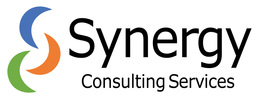|
Have you been secretly (or not so secretly!) cheering over recent articles about companies like Accenture and Deloitte ditching their performance reviews? These are probably the most universally dreaded job function and with good reason: they often have little value, are awkwardly navigated, and require ridiculous amounts of time to prepare. Providing feedback in meaningful, healthy ways drives performance and supports high morale, so we cannot eliminate reviews entirely. Although the headlines sound dramatic, other companies aren’t abandoning them, but they are reinventing them. A Harvard Business Review article explains how Facebook approached modifying their review process. You can reinvent yours as well. So what are alternatives to the 6-page form that takes as many hours to complete? Here are two models to consider. Model 1 – The Check-In
This approach can be utilized anytime ranging from weekly to quarterly. The more frequent the exchange, the shorter it can be. Doing this weekly might mean that discussions are only 5-15 minutes long. The Check-In could also occur at project milestones, if that makes sense based on the workflow. The 4 questions support a coaching-style conversation. Both parties (supervisor and employee) answer all 4 questions.
Model 2 – The Mini Review Like The Check-In, this can take place with high frequency, but it is a little more traditional in the approach, hence being referred to as a review. The supervisor answers the following:
A supervisor could use this model as written as a first-step toward alternative performance reviews, and then later work toward making the conversation more of a dialogue. To support more discussion, this model can be modified by having the employee offer self-reflection on the first two questions. As with Model 1, simple documentation should be done at least quarterly. The process of moving from traditional reviews to models like these may take 2 or more years. Time must be invested building the capacity of supervisors for giving feedback in this manner, and employees would need to develop their skills and comfort with their role. During this transition period, the traditional review system would stay intact. Depending on how compensation is determined and a company’s general level of formality and risk management, the traditional review may never entirely be ditched, but it can be abbreviated and approached as a part of the general cadence of the business, rather than an epic event. If you look at these models and still feel queasy about conducting a review, there are other aspects of reviews to examine. Start with exploring whether clear, explicitly stated expectations are really present. After all, if you’ve not been clear about what is expected, it can feel uncomfortable and even unfair to provide feedback (namely, critical feedback). In this case, the first work to do is to make expectations clear, often through specific Key Performance Indicators (KPIs) for the technical expectations, and behavioral competencies for the interpersonal and style expectations. Ultimately, there are many ways to structure review systems and processes. What is most important is that people receive meaningful, fair feedback in a timely way, and in as low-stress fashion as possible.
0 Comments
Leave a Reply. |
Categories
All
Archives
January 2017
Want more? |
Services |
|


 RSS Feed
RSS Feed